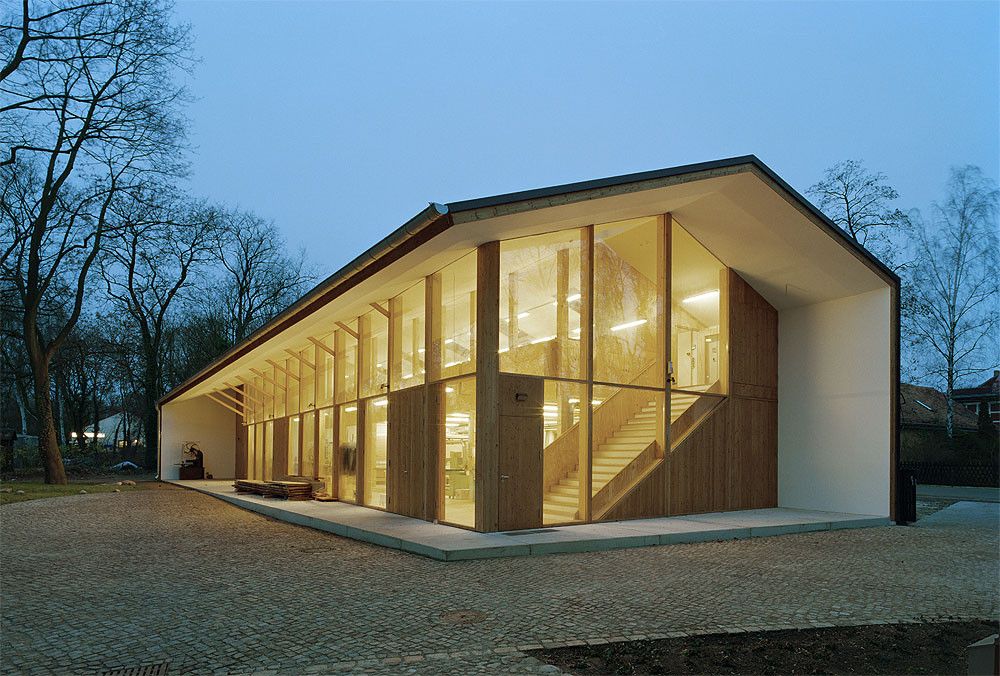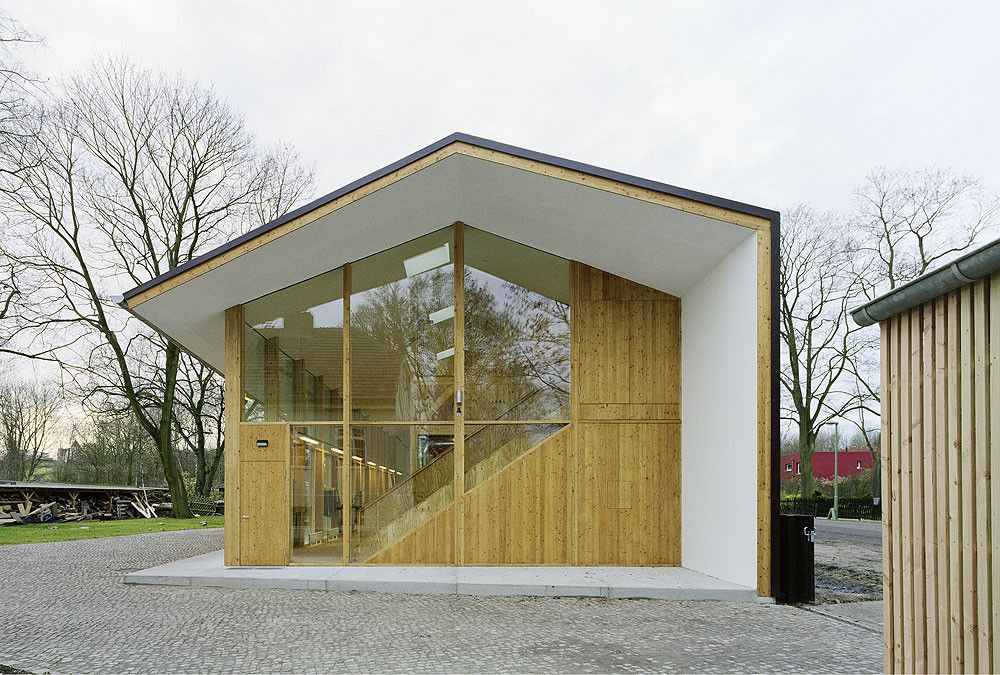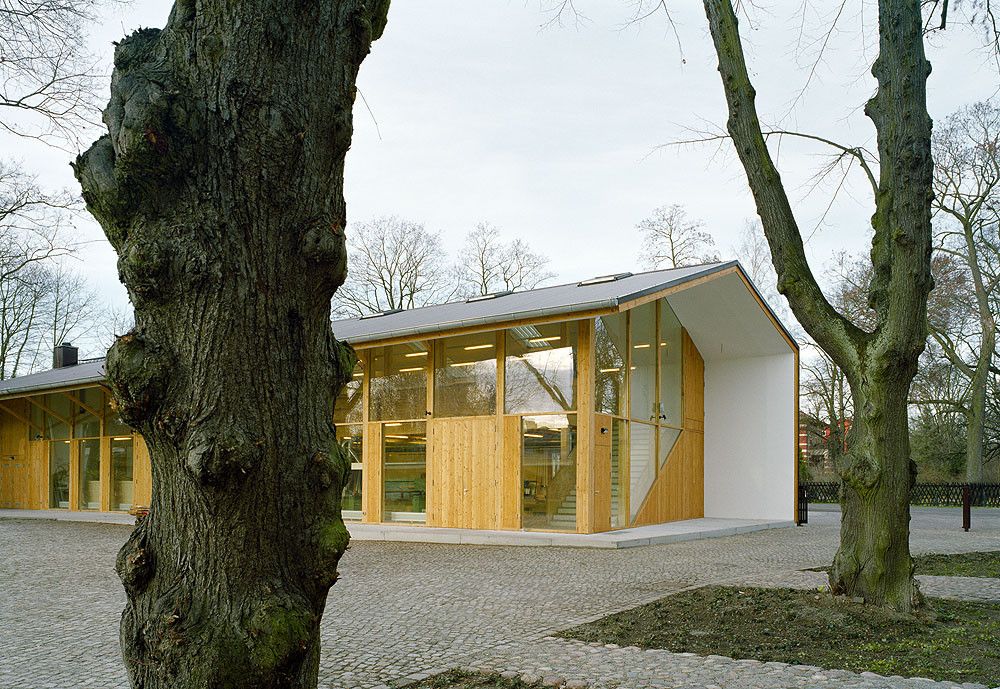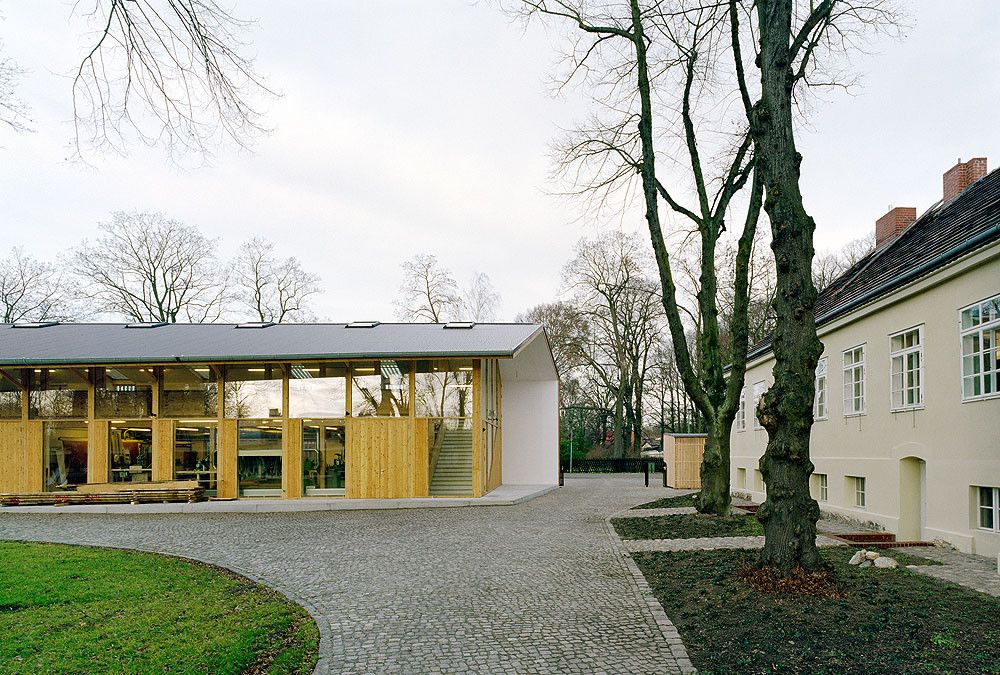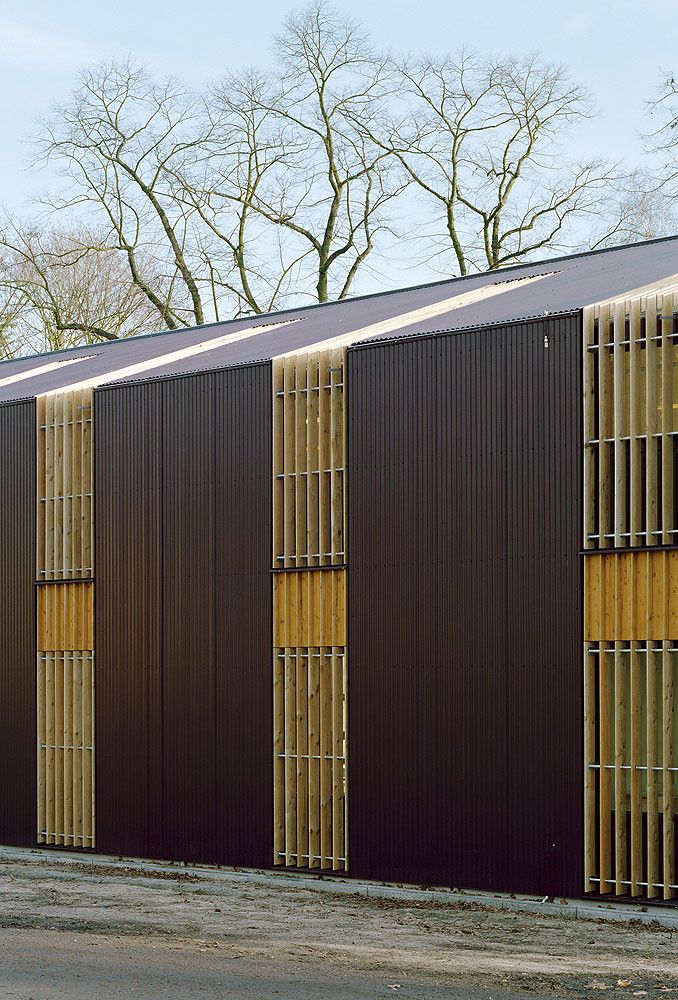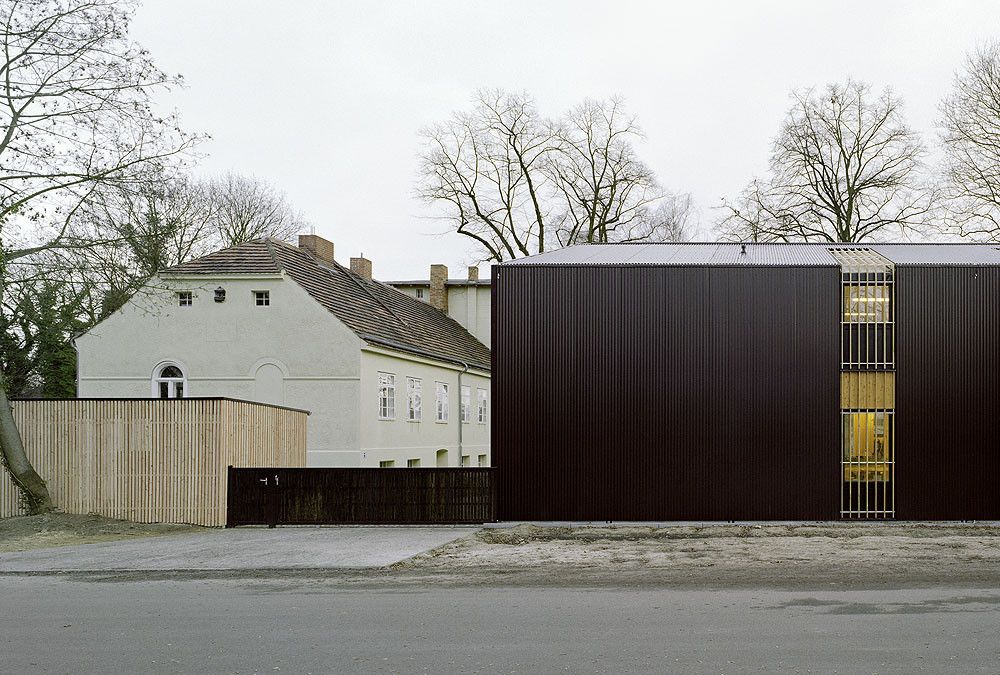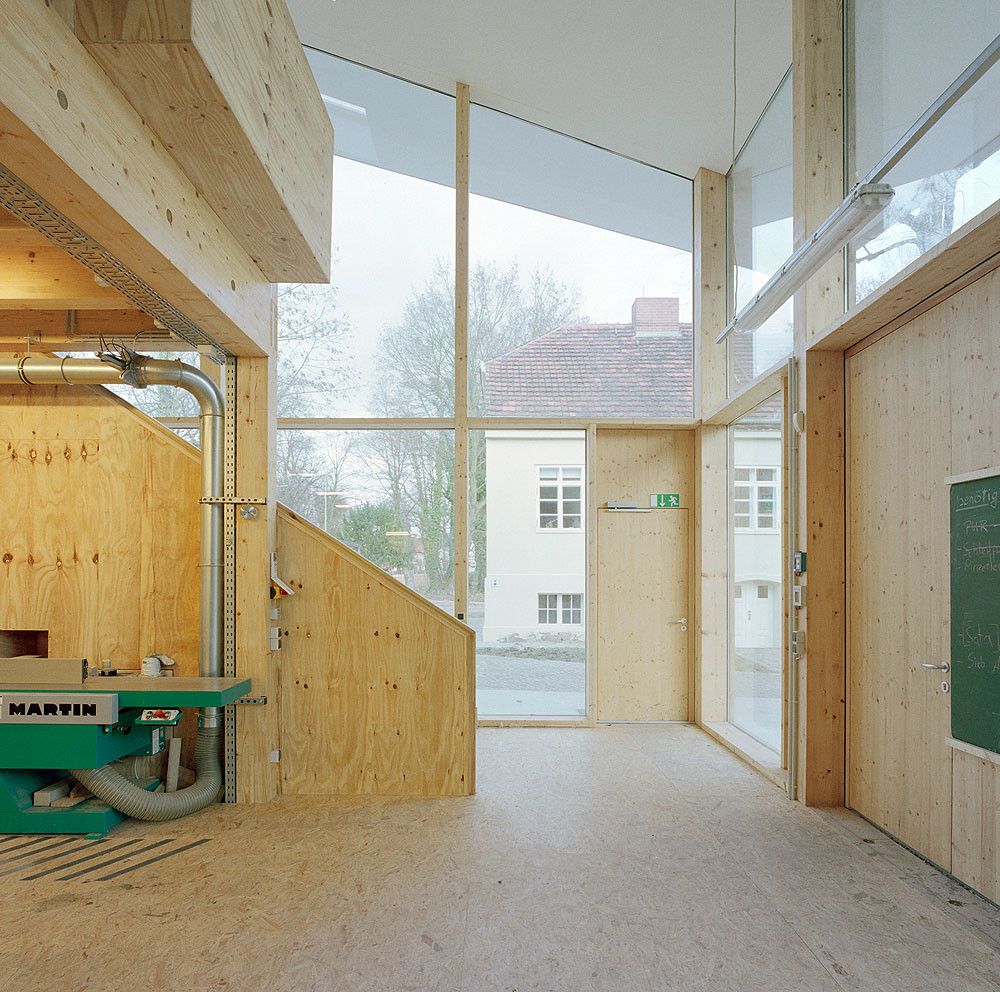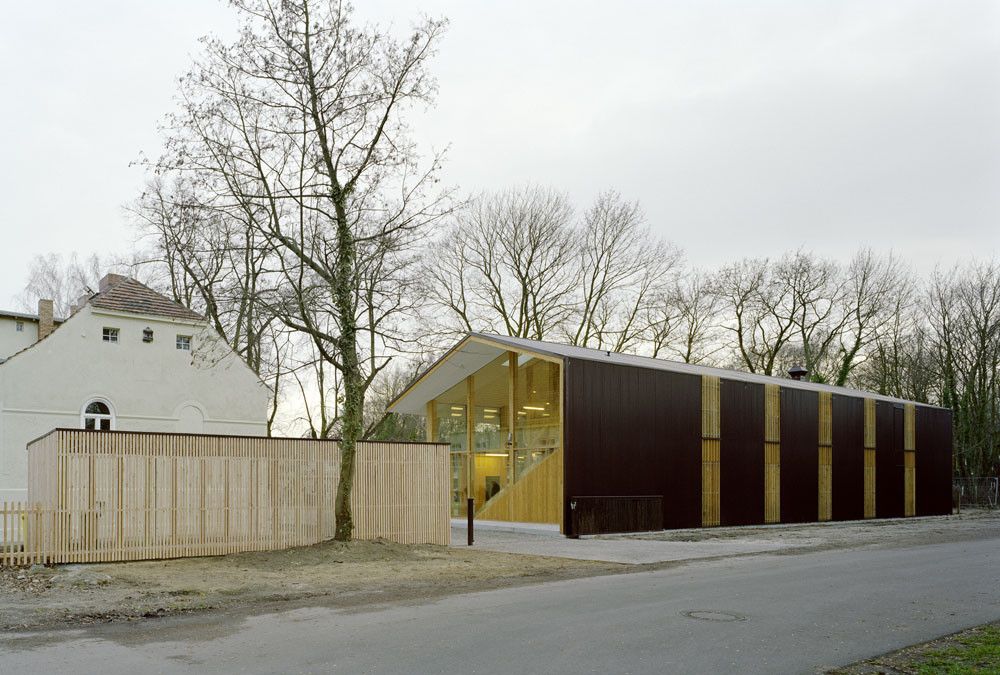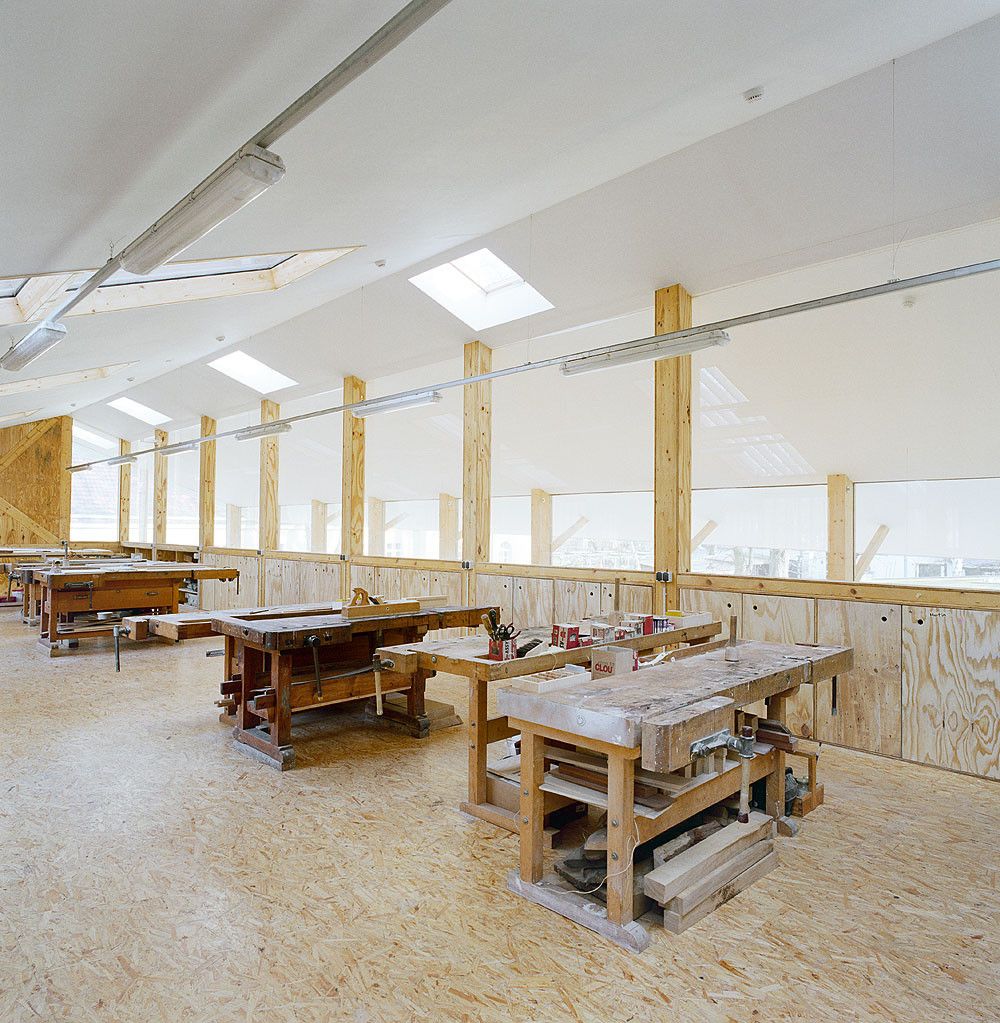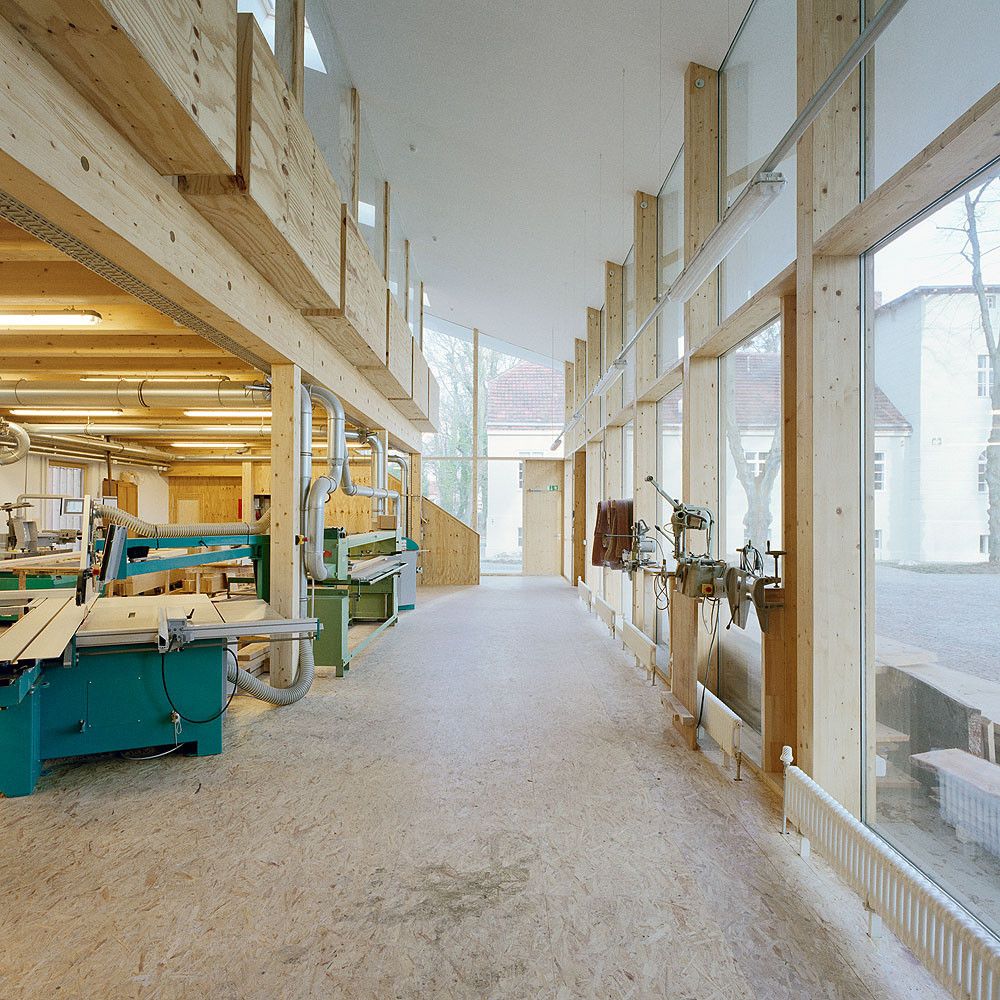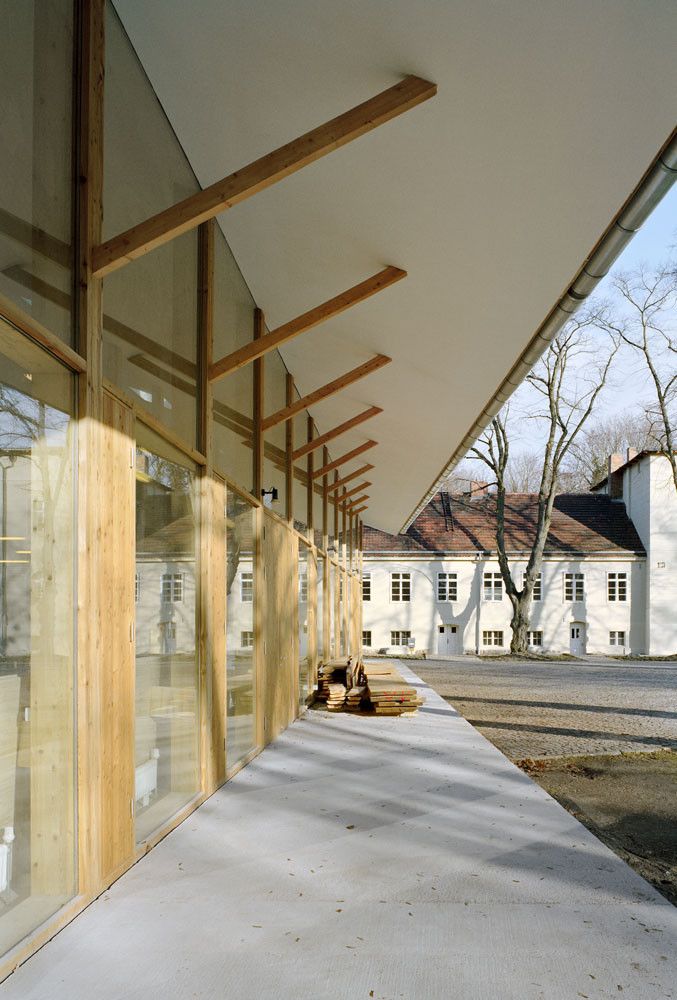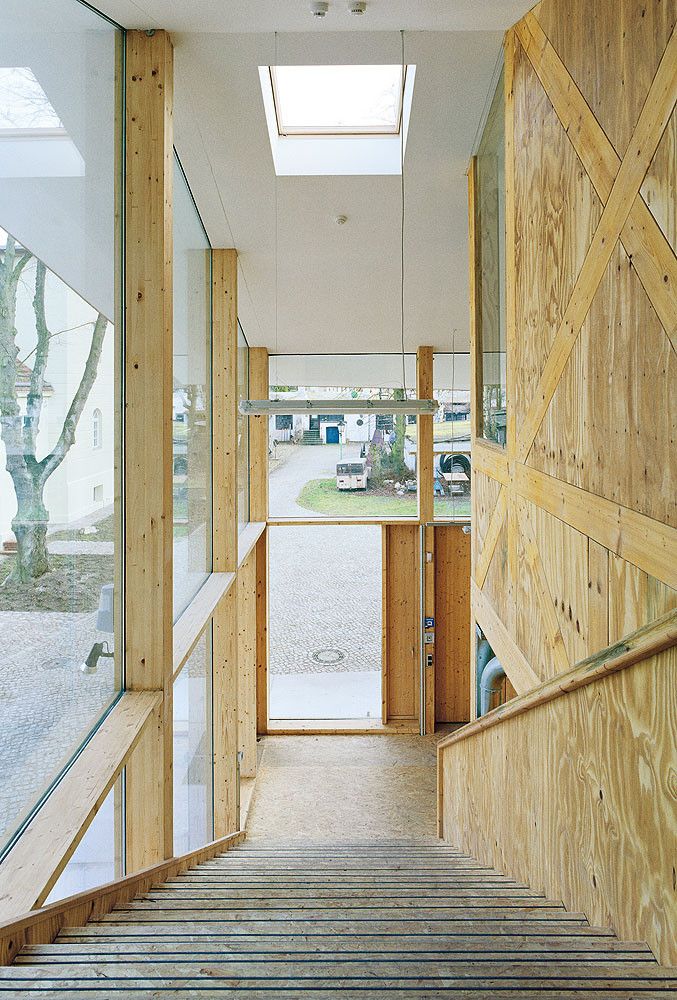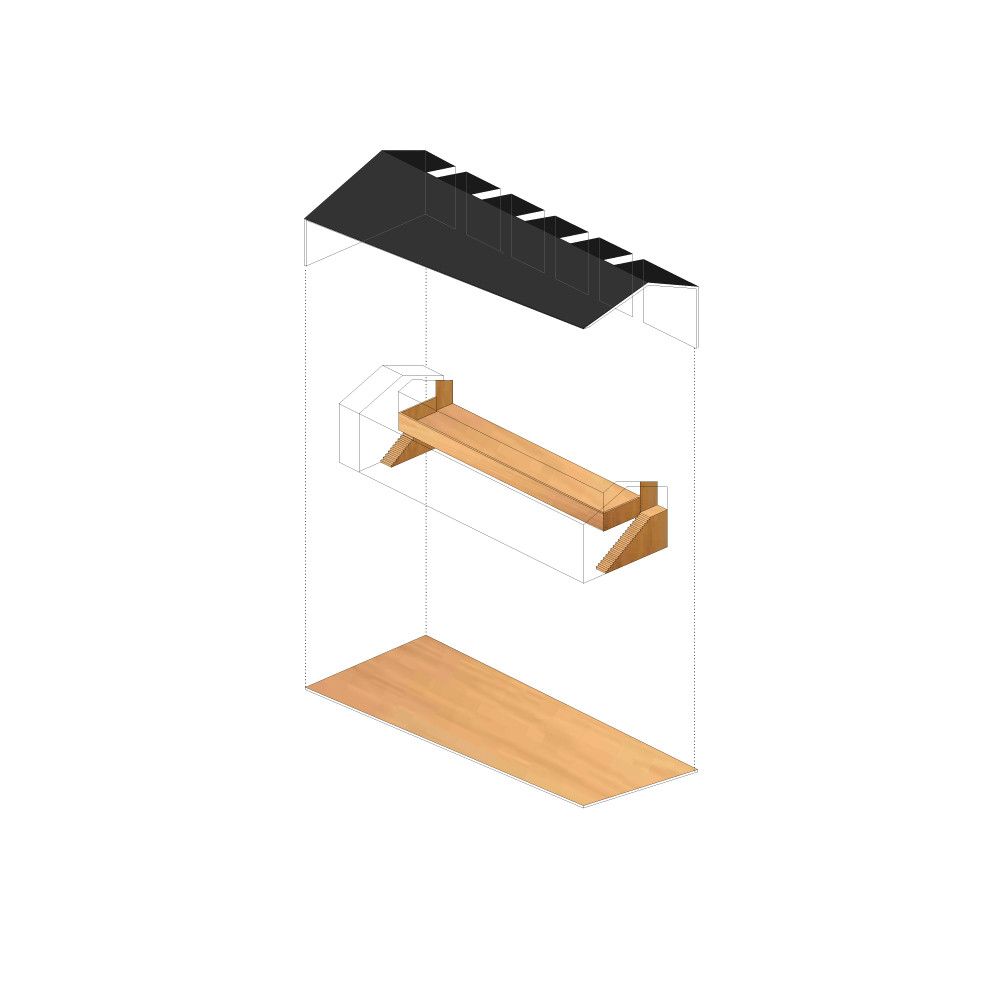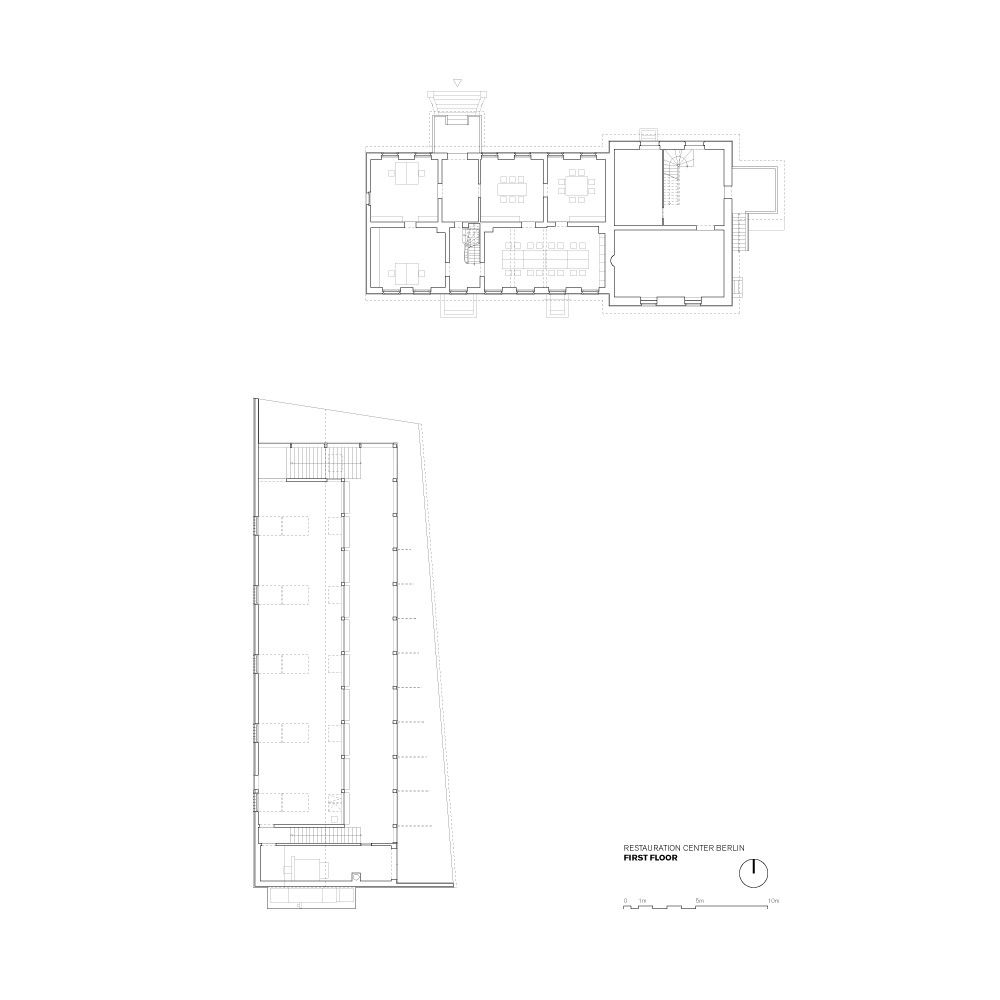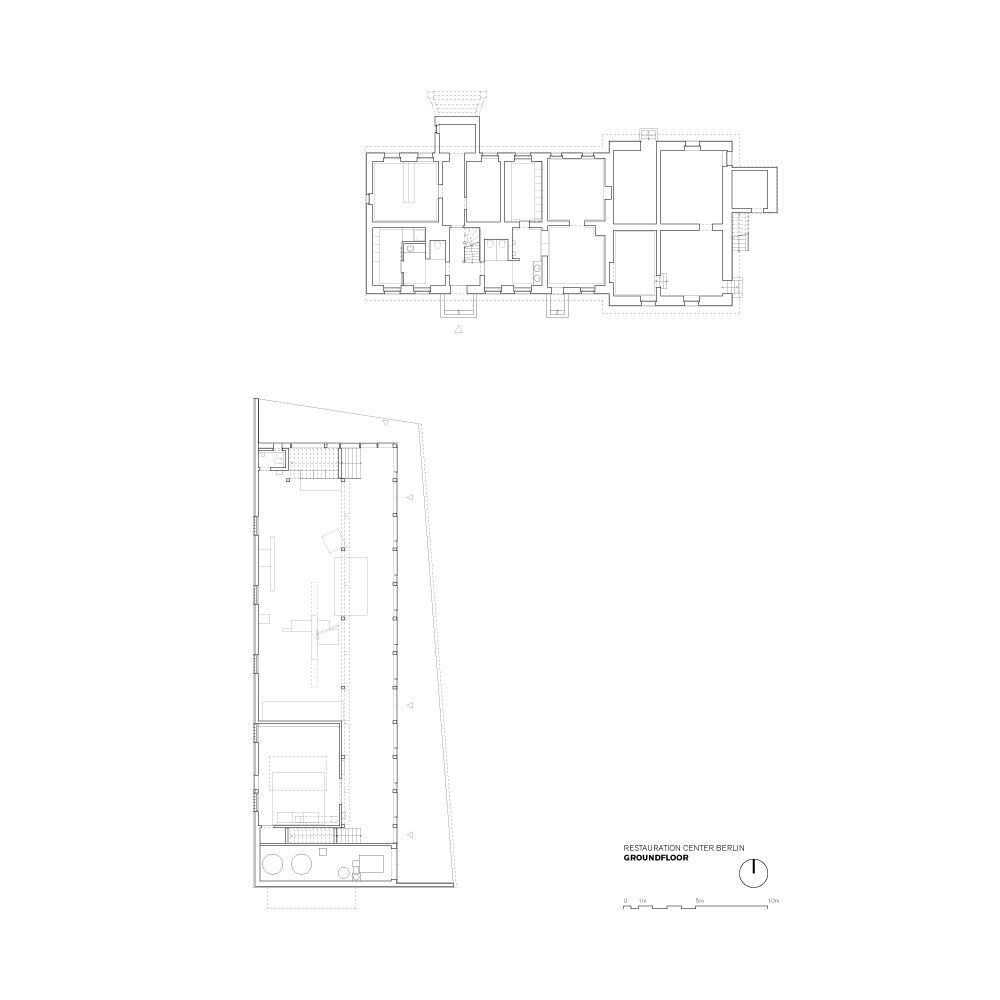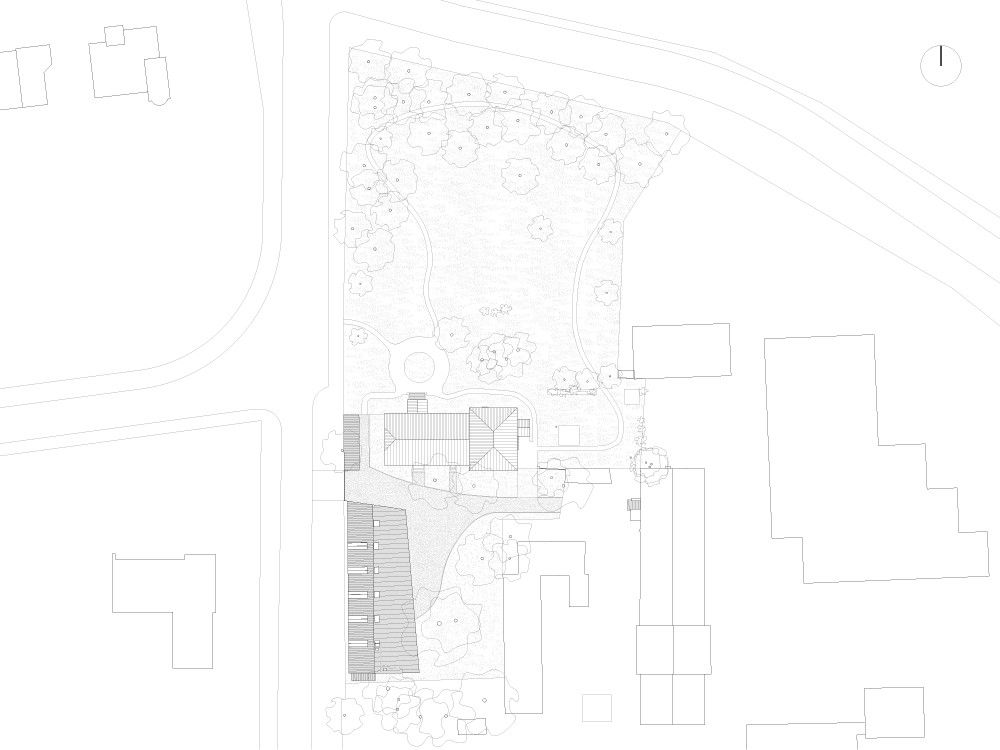The art of carpentry is not what it used to be, as we are finding newer, better, and less time consuming materials to build with. To take the time to hand build a piece is being replaced by machines that will create the same piece more precisely in less time with a lot less effort. This project takes a farm estate and converts it into a training center for carpenters and restorers in attempt to keep the craft alive.
Barn 2.0 by UTArchitects is located in Berlin, Germany, and is 1,000 square meters in area. The site in which it is located was once a plantation in the 18th century where the buildings were degenerated over time and demolished, later to be occupied by garage buildings, that were also demolished to complete this project. The new workshop creates the original shape of the buildings around the yard in respects to the farmhouse and former buildings constructed there. The farmhouse is still recognized as the head building of the composition, containing administration and training classrooms.”]
The new building is lower in height in comparison to the farmhouse. It is set back on the site and appears as an open shell with the interior connecting with the yard and opening up to the farmhouse. The façade and rood of the workshop form a continuous surface, which is wrapped over the historic courtyard to create an open hall and provide a sheltered exterior. It was important to construct glass walls to support communication between trainees, offer views into the yard, and allow for some indirect natural light into the workshop. The facades towards the farmhouse and the yard are glazed full height whereas the street façade is predominantly closed and only structured by vertical window slits.
The cantilevered roof was designed to create sun and weather protection as well as provide sound protection towards the neighborhood. The space under the cantilevered roof is occupiable and can be used for several purposed such as an extended workplace, for educational lessons, or rests during the summer. By using simple materials such as corrugated metal sheets for the façade and roof surfaces, painted cardboard plates, and spruce wood, the project itself ended up being very inexpensive to construct that resulted in an inspiration place to lean about the beautiful craft of carpentry.
Photography by: © Ulrich Schwarz
Photography by: © Ulrich Schwarz
Photography by: © Ulrich Schwarz
Photography by: © Ulrich Schwarz
Photography by: © Ulrich Schwarz
Photography by: © Ulrich Schwarz
Photography by: © Ulrich Schwarz
Photography by: © Ulrich Schwarz
Photography by: © Ulrich Schwarz
Photography by: © Ulrich Schwarz
Photography by: © Ulrich Schwarz
Photography by: © Ulrich Schwarz
exploded axo
first floor plan
ground floor plan
section
site plan
Courtesy of UTArchitects





